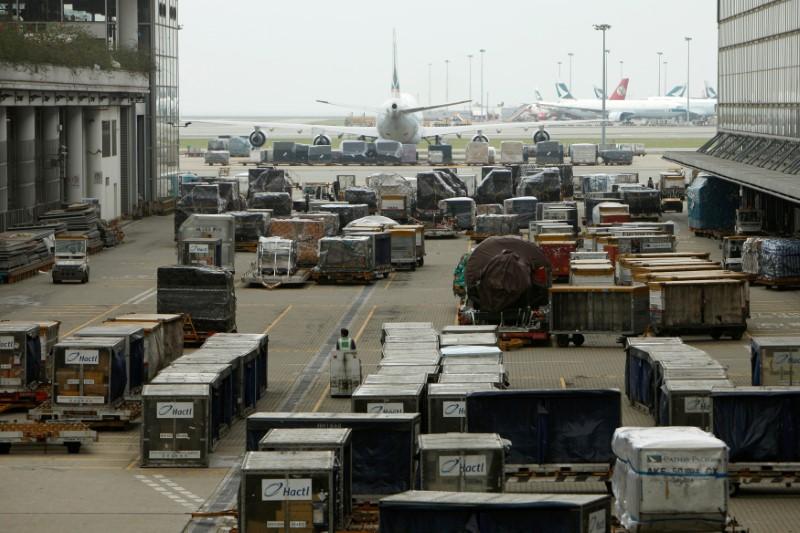
After several years of tepid industry performance, the American freight forwarder is finally reaping the benefits of sustained global economic growth. Driven, in part, by e-commerce-related activity, the industry sees volumes continuing to grow throughout the upcoming year. But with this kind fortune comes the challenge of tight truck capacity constraints, making it difficult for shippers and forwarders to get shipments to final destinations on time. With no apparent solution coming down the road, the answer may be a window of opportunity in the sky.
Today’s supply chains are already compressed, and forwarders are under pressure to find capacity in an inflexible shipping environment. The recent electronic logging device (ELD) mandate has created stricter enforcement of driver hours of service rules and, by extension, fewer independent drivers willing to operate under the new regulation. With rising fuel and maintenance costs, along with the challenging lifestyle of trucking, trucks are becoming harder to find in the full-trailer, partial-trailer and drayage markets. The capacity crunch has caused rates to increase as much as 30 percent over the last year.
After the Sept. 11 terrorist attacks in 2001, U.S. domestic airlines responded to lower passenger demand by operating smaller aircraft on routes traditionally served by more substantial, mainline aircraft. The regional jets barely had room for passenger luggage, and cargo shipping was out of the question on most flights. With the reduction in heavy freight capacity due to the bankruptcies of carriers such as Emery, Kitty Hawk Airlines and BAX Global, forwarders resorted to trucking as the routine way to move heavy shipments between cities.
The U.S. Transportation Security Administration’s (TSA) security requirements also adversely affected air cargo volumes, as stricter regulations demanded shipper vetting through the government’s Known Shipper Program, intricate and often-cumbersome acceptance procedures and physical screening. When combined with the added burden of additional security-related costs and smaller planes, domestic passenger-plane belly cargo became a least-preferred option for forwarders in favor of the more accessible and less cumbersome trucking choice.
Forwarders are not the only ones benefiting from the positive economic situation, as airlines in the United States are experiencing their most profitable years since deregulation. Airlines have been able to increase profits not by raising airfares, but by increasing passenger loads, charging for baggage and, in a trend not seen since 2010, taking on substantial air cargo volumes. In fact, last year’s demand surged by 9 percent – more than double the 3.6 percent annual growth rate recorded in 2016. The record profitability enables significant capital investments in fleet renewal that will not only benefit passengers but also forwarders, who now can enjoy the advantages of newer, larger planes replacing regional jets and bringing increased cargo service to the cities they serve.
Shippers are also asking their forwarders to “prime the pump” by using a blend of trucking and belly cargo modes for their consignments. For example, a small portion of a large order can initially be moved quickly by airfreight, followed by the remainder arriving a few days later via truck. When timed correctly through efficient planning, forwarders are more able to navigate the vagaries of challenging truck capacity by using airfreight to meet buyer demand. As the margin between today’s higher trucking costs and airfreight narrows, this option becomes economically more attractive throughout the supply chain.
While increased trucking costs and lower capacity continue to create opportunities for U.S. passenger carriers, our government stands between us and the road to success through unclear TSA security programs and inefficient computer systems. Forwarders face a constant challenge in interpreting and understanding TSA air cargo regulations, costing them financial resources in extra personnel and, in some cases, legal counsel. Also, the process of associating their authorized representatives through the TSA Indirect Air Carrier Management System and vetting shippers using its Known Shipper Management System is complicated and cumbersome, resulting in slow response times and inaccurate information provided to the forwarding community. The systems exist for sound reasons but need investment in quality improvement now.
Historically, manual log books and driver detention may have hidden inefficiencies that enabled shippers to benefit at the expense of the truck driver, but in the era of electronic logging, the tables are turning rapidly. Trucking capacity for the foreseeable future is likely to not only cost more but be harder to get until supply and demand equalize. In the meantime, an opportunity exists for domestic air cargo to capture more market share but only if airlines and government regulators work together in making the necessary investment to drive change.
With reports from ACW
.









